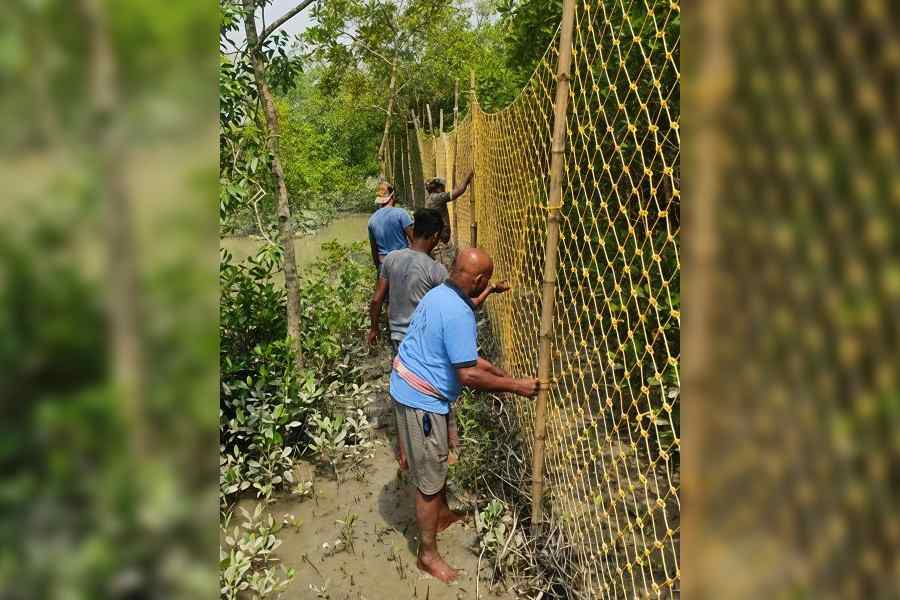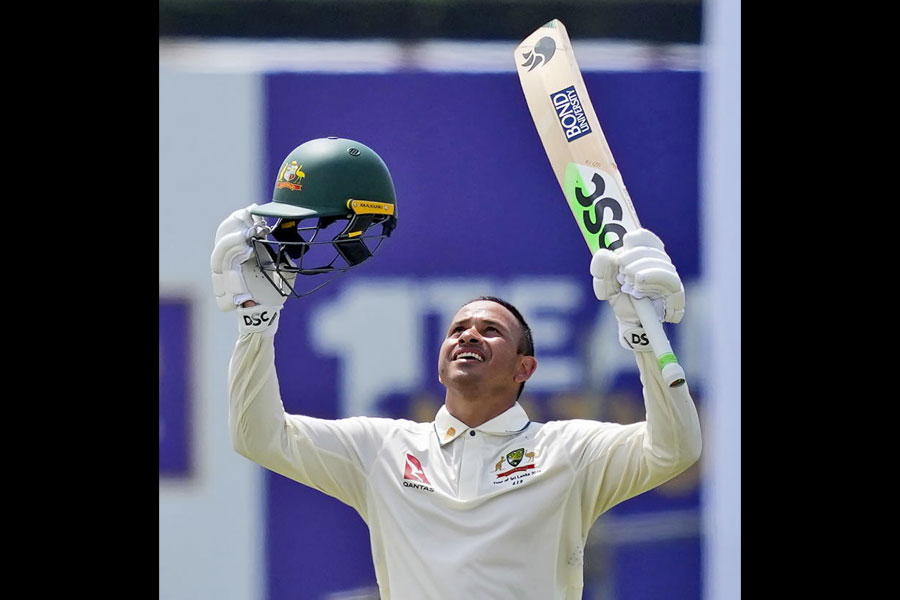 |
For over a decade, Calcutta-educated palaeontologist Sankar Chatterjee has struggled to extract secrets submerged in the sea around Bombay High, India’s offshore oil field 160 km west of Mumbai.
Deep under the Arabian Sea waters and even beneath the seabed, Chatterjee believes, lies evidence of an ancient catastrophic event that changed the course of history — for life on earth, and for the Indian subcontinent.
His research suggests that Bombay High lies in a region of the earth’s largest crater, a 500-km wide bowl-shaped depression — a scar left by the impact of a giant asteroid that crashed into the planet. Many years ago, Chatterjee, curator of palaeontology at the museum of Texas Tech University in the US, named it the Shiva Crater.
Several scientists are veering around to the idea that the meteor that crashed near present-day Mumbai was responsible for the mass extinction that wiped out dinosaurs and other species 65 million years ago.
It’s an idea that challenges the prevailing theory that the asteroid that crashed at a site called Chicxulub in Mexico led to the demise of the dinosaurs. But now Shiva threatens to displace Chicxulub as the culprit crater.
The link between an asteroid impact and mass extinction first emerged in 1980 when geologist Luis Alvarez detected high levels of iridium — an element abundant in asteroids — in geological layers 65 million years old, coinciding with the dinosaur extinction. The hypothesis was that the impact kicked up colossal amounts of dust that blocked sunlight for months, killing plants and virtually all large animals.
In the mid-1980s Chatterjee, who specialises in dinosaurs, found particles of shocked quartz near Jabbalpur in Madhya Pradesh. “No terrestrial geological process is known to make shocked quartz,” he told KnowHow.
 |
| 3-D reconstruction of the submerged Shiva crater 3-D reconstruction of the submerged Shiva crater |
More signatures began trickling in. Geophysicist Om Prakash Pandey at the National Geophysical Research Institute (NGRI), Hyderabad, and his colleagues were trying to fathom the origins of ancient volcanic activity in western and central India. It’s known as the Deccan volcanic event — a massive outpouring of lava that lasted hundreds of thousands of years.
The NGRI scientists detected evidence of shattered crust, slight changes in gravity and high heat flow beneath the seabed off the coast of Mumbai. They proposed in 1993 that Deccan volcanism was triggered by the crash of a 10km-wide rock from space just off Mumbai. “The meteor created a giant hole in the earth, allowing magma to spill out,” Pandey said.
Their studies pointed to a vast 12km-high column of magma buried six kilometres beneath the seabed off the Mumbai coast. The geological community calls it the NAPSI structure — named after the four geophysicists involved in its discovery — Janardhan Negi, Pramod Agarwal, Pandey and A.P. Singh. The NGRI team argued that this was a key clue pointing to an impact.
In the mid-1990s, Chatterjee began to put together all available clues and conduct fresh analysis, seeking the help of the Oil and Natural Gas Commission, the agency that manages Bombay High. While ONGC has been extracting oil from beneath the sea bed, its scientists have been conducting geophysical studies, looking for oil-rich zones.
His analysis revealed additional striking features — all pointing to an impact. A giant crater with concentric rings, shattered pieces of crust on the coastline and a crack in the crust in western India. Meanwhile, NGRI physicist Gopalakrishna Parthasarathy detected iridium and high pressure fullerenes in Anjar in Gujarat. “This is hard evidence of an impact,” said Parthasarathy.
Chatterjee used the data collected by ONGC to put together a map of the crater. “The actual crater is covered by seven kilometres of sediment,” he said. His studies suggest that the Shiva meteor was 40km wide. The timing of the impact coincides with the Deccan volcanism that lasted for 900,000 years.
The case for Shiva as the destroyer of dinosaurs and other life forms of the Cretaceous was bolstered last year by Princeton University geophysicist Gerta Keller, another scientist who’s been challenging conventional geological wisdom.
At the annual meeting of the Geological Society of America, Keller presented evidence that suggests that Chicxulub could not have led to dinosaur extinction. Keller and her colleagues from Germany and Switzerland believe that the Chicxulub asteroid hit the earth 300,000 years before the extinction of the dinosaurs. “The Chicxulub impact crater could not have caused the mass extinction,” she said.
Marine sediments that the scientists examined also indicate that marine animal microfossils were left virtually unscathed by the Chicxulub event. Keller believes the causes of extinction are more complex than a single asteroid. She argues that multiple asteroid impacts, massive volcanism in India, and climate change may have culminated in the extinction.
Keller’s hypothesis is that the Chicxulub was followed by a much bigger asteroid. “There is some evidence that a larger asteroid hit India… but the evidence for it is not very compelling at this moment,” Keller said.
Chatterjee believes the best evidence may lie in a collection of rocks that ONGC has extracted from beneath the seabed off the Mumbai coast by drilling through the thick sediment layer. The one sample that he managed to examine contained signatures of silica melt and shocked quartz — supporting the idea that a rock from space crashed near Mumbai and changed earth’s history.
The impact also changed things for India. Sixty-five million years ago, India — having separated from Antarctica and Madagascar earlier — was an island joined to Seychelles and moving north toward Asia. The impact caused Seychelles to break away from India, while the Deccan volcanism altered the landscape of western India.
Chatterjee points out that the cratering process leads to unique fractures in rocks that aid the accumulation of hydrocarbons. Many impact sites, including Chicxulub, are rich in oil and gas. The Shiva crater has an estimated 8.4 billion barrels of oil and vast quantities of natural gas. Bombay High may be Shiva’s gift to India.











